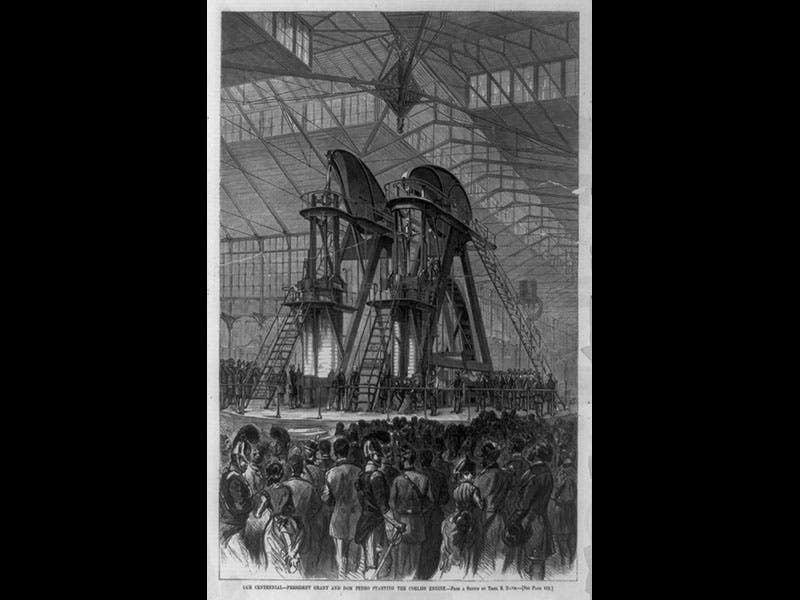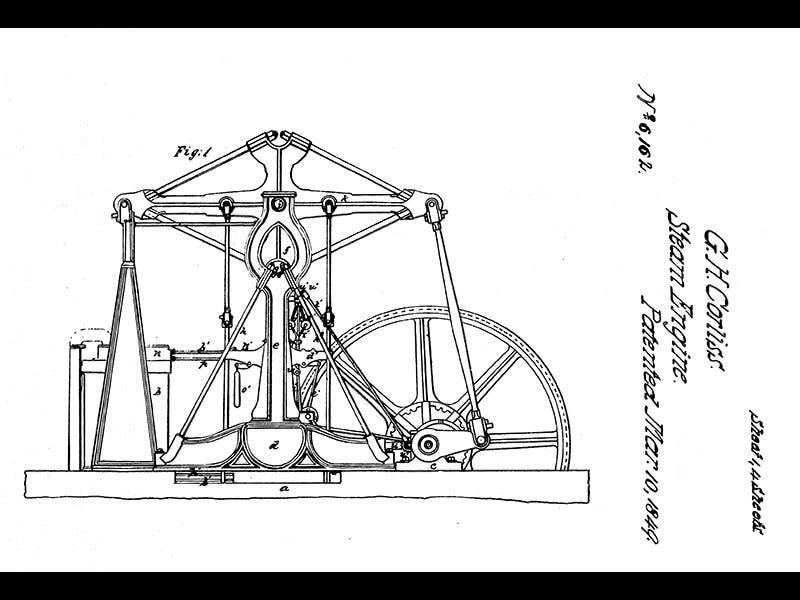Scientist of the Day - George Corliss






George Corliss, an American mechanical engineer, was born June 2, 1817. In 1849, Corliss applied for a patent for a novel kind of valve gear for a stationary steam engine (second image). The steam engine was then almost 75 years old, and steam engines still used a sliding valve system that had changed little since the days of James Watt. Four of them were required to admit and exhaust steam for both the up and down strokes. The problem with sliding valves is that they are constantly exposed to a wide temperature range, as the steam cools and condenses, which means they expand and contract incessantly, and it is difficult to regulate the beginning and end of each cycle with precision.
Corliss invented a set of four rotary valves, each linked to a central rotating device called a wrist plate, as we can see in one of his patent illustrations (third image). Each valve stays at a constant temperature, and the intake cutoff points can be regulated with great precision. As a result, a Corliss engine is about 30% more efficient than a Watt engine. In manufacturing, increased efficiency is the blessing of all blessings. Corliss engines could also run at a constant speed under a variety of loads, due to a clever system of governors that were also included in the 1849 patent, which was a very useful feature for an engine being used to power a factory. So Corliss engines took over the place of honor in the factory workplace, in the first great steam engine revolution since Watt invented the thing in the first place.
At the 1876 Centennial Exhibition in Philadelphia, meant to showcase America's newfound industrial power, the central fixture was a mammoth operating Corliss steam engine, which powered everything else at the fair (first image). It was built by Corliss at his factory in Rhode Island and donated to the Exhibition. Other Corliss engines were installed in factories all across the country, and some are still running; a photo above of an operating engine in Providence provides a good view of the valve gear and wrist plate (fourth image). The Science Museum in London also has an operating Corliss engine, which they call "Big Red" (fifth image).
The first photo captures the moment in 1874 when the Philadelphia Corliss engine was first started by President Grant and Emperor Dom Pedro of Brazil. Corliss’s age at the time of his portrait photo is not known (sixth image).
Dr. William B. Ashworth, Jr., Consultant for the History of Science, Linda Hall Library and Associate Professor, Department of History, University of Missouri-Kansas City. Comments or corrections are welcome; please direct to ashworthw@umkc.edu.






